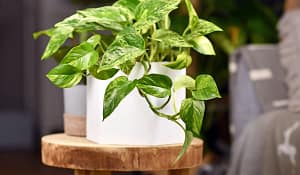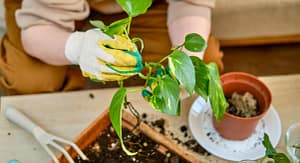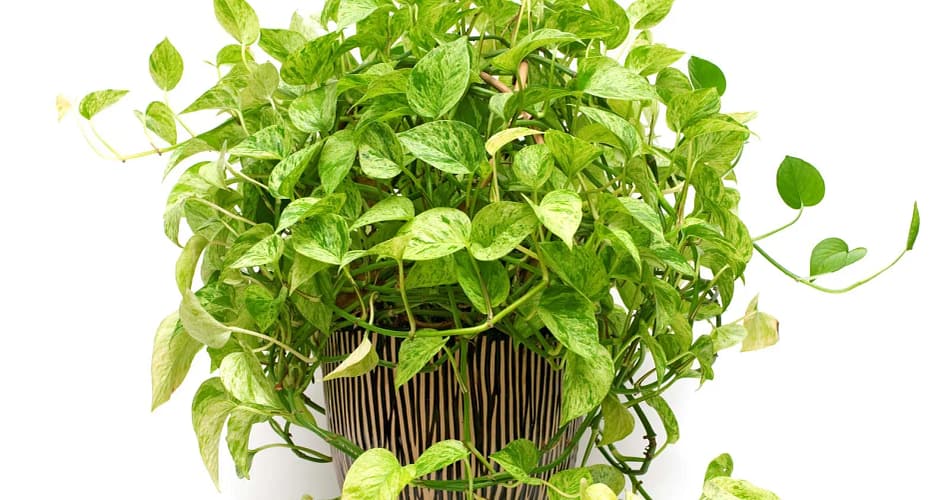Ultimate Guide to Pothos Plant: The Perfect Indoor Plant | Care, Tips, Benefits
Indoor gardening enthusiasts often search for plants that are easy to care for, look great, and thrive in a variety of conditions. Enter the Pothos plant, a favorite among both novice and seasoned plant lovers. In this comprehensive guide, we’ll delve into everything you need to know about Pothos, an indoor plant that’s as versatile as it is beautiful.
Table of Contents
| Sr# | Headings |
|---|---|
| 1 | Introduction |
| 2 | What is Pothos? |
| 3 | Types of Pothos |
| 4 | Benefits of Having Pothos |
| 5 | How to Plant Pothos |
| 6 | Pothos Care Guide |
| 7 | Common Pothos Problems and Solutions |
| 8 | Propagating Pothos |
| 9 | Pothos and Pets: Safety Tips |
| 10 | Creative Pothos Display Ideas |
| 11 | Seasonal Care Tips for Pothos |
| 12 | Plant FAQs |
Introduction
Have you ever walked into a room and instantly felt a sense of calm and freshness? Chances are, you’ve encountered the magic of Pothos, an indoor plant that’s not just aesthetically pleasing but also incredibly easy to care for. Known for its hardiness and attractive, heart-shaped leaves, It is a go-to plant for many indoor gardeners. But what makes this plant so special? Let’s dive in and find out!
What is Pothos?
Pothos, also known as Epipremnum aureum, originates from the Solomon Islands in the South Pacific and is a tropical vine. It’s known for its beautiful, heart-shaped leaves that can be green or variegated with white, yellow, or light green. it is often referred to as the “Devil’s Ivy” because it is almost impossible to kill and stays green even when kept in the dark. This plant is perfect for anyone who wants to bring a touch of nature indoors without the hassle of high maintenance.
Types of Pothos
Golden Pothos
This is the most common variety, featuring green leaves with yellow variegation. It’s the classic choice for many indoor gardeners.
Marble Queen Pothos
The Marble Queen has stunning white and green marbled leaves, adding a touch of elegance to any space.
Neon Pothos
With its bright, neon-green leaves, the Neon Pothos stands out in any indoor garden.
Jade Pothos
The Jade Pothos has solid green leaves and is often used in low-light conditions.
Manjula Pothos
This variety boasts large, heart-shaped leaves with cream and green variegation.

pothos plant
Benefits of Having Pothos
Air Purification
It is known for its air-purifying qualities. It can remove toxins such as formaldehyde, xylene, and benzene from the air, making your indoor environment healthier.
Low Maintenance
One of the biggest advantages of This Plant is that it requires minimal care. Pothos can flourish in various lighting environments and requires infrequent watering.
Aesthetic Appeal
With its trailing vines and lush foliage, It adds a touch of greenery to any room. It can be grown in pots, hanging baskets, or even trained to climb trellises.
Stress Reduction
Research indicates that spending time around plants can lower stress levels and enhance mood. Having Pothos in your home can create a more relaxing and pleasant atmosphere.
How to Plant Pothos
Planting Pothos is a straightforward process:
- Choose a Pot:Select an appropriate pot with excellent drainage to prevent waterlogging, as Pothos plants prefer well-draining soil.
- Use the Right Soil:Opt for a suitable potting mix, such as one designed for houseplants or a combination of peat moss, perlite, and vermiculite, to ensure optimal growth conditions.
- Planting: Place the plant in the pot and fill it with soil, leaving some space at the top for watering.
- Watering: Water the plant thoroughly after planting, and let the soil dry out slightly between waterings.

pothos plant
Care Guide
Light Requirements
It can adapt to various lighting conditions, but it thrives in bright, indirect light. Avoid direct sunlight .
Watering
Water your Pothos plant when the top inch of soil is dry to the touch. Avoid overwatering to prevent root rot; allow the soil to dry out between each watering.
Temperature and Humidity
Pothos prefers temperatures between 60-85°F (15-29°C). It also enjoys higher humidity but can tolerate lower levels.
Fertilizing
Apply a balanced houseplant fertilizer every 2-3 months to nourish your Pothos plant. During the growing season, you can fertilize more frequently.
Pruning
Regular pruning helps to maintain the shape and encourages bushier growth. Simply cut back the vines to your desired length.
Common Pothos Problems and Solutions
Yellow Leaves
Yellow leaves may indicate overwatering or inadequate drainage. Monitor soil moisture levels and adjust your watering schedule as needed.
Brown Leaf Tips
Brown tips often indicate low humidity or underwatering. Increase humidity by misting the plant or using a humidifier, and ensure consistent watering.
Pests
It can attract pests like spider mites and mealybugs. Clean the leaves with a damp cloth and apply insecticidal soap if pests are present.
Leggy Growth
If your Plant is growing long, leggy vines with sparse leaves, it may not be getting enough light. Move it to a brighter location.
Propagating Pothos
Propagating it is a fun and easy way to create new plants:
- Select a Healthy Vine: Choose a vine with several leaves and a few nodes (the spots where leaves grow).
- Cut Below a Node: Using clean scissors, cut the vine just below a node.
- Place in Water: Put the cut end in a glass of water, ensuring at least one node is submerged.
- Wait for Roots: Put the glass in indirect light and change the water every few days. Roots are expected to form within a few weeks.
- Plant in Soil: Once the roots are a few inches long, plant the cutting in soil and care for it as you would a mature plant.
Pothos and Pets: Safety Tips
Pothos is toxic to pets if ingested, causing symptoms like vomiting and mouth irritation. If you have pets, consider placing the plant out of their reach or opting for pet-safe plants.
Creative Pothos Display Ideas
Hanging Baskets
Hang your This Plant in a basket to create a cascading effect. This is perfect for small spaces where floor space is limited.
Wall-mounted Planters
Use wall-mounted planters to create a living wall. This Plant vines can be trained to grow vertically, adding greenery to your walls.
Shelf Decor
Place your plant on shelves and let the vines trail down. This adds a touch of nature to your decor and can make a room feel cozier.
Macrame Plant Hangers
Combine your Plant with a macrame plant hanger for a boho-chic look. The trailing vines will complement the intricate designs of the hanger.
Seasonal Care Tips for Pothos
Spring and Summer
During the growing season, your Plant will need more frequent watering and regular feeding. This is also a good time to propagate and repot if necessary.
Fall and Winter
In the cooler months, This Plant growth slows down. Reduce watering and hold off on fertilizing. Ensure the plant is not exposed to cold drafts.
FAQs
1. How often should I water my Pothos?
Water your plant when the top of soil feels dry. Overwatering can lead to root rot, so it’s better to underwater slightly than to overwater.
2. Can Pothos grow in low light?
Yes, It can tolerate low light conditions, but it grows best in bright, indirect light. In low light, the variegation may fade. The growth of plant might slow down in low light.
3. How do I know if my Pothos needs repotting?
If you see roots growing out of the drainage holes or the plant is becoming root-bound, it’s time to repot. Spring time is good time for repotting.
4. Is safe for children and pets?
Pothos is toxic if consumed, thus it should be kept away from children and pets. Symptoms of ingestion include vomiting and mouth irritation.
5. How can I make my Pothos bushier?
Regular pruning encourages bushier growth. Cut back the vines to your desired length, and new growth will emerge from the nodes.

